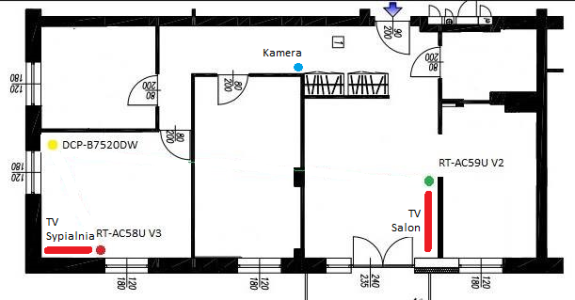Hi All
My first time posting on this forum so I hope you can help. I have an AiMesh comprising 2 ASUS Zenwifi AC CT8 and a newly added ASUS AC mini CD6. All 3 have latest firmware. I have 2 wifi security cameras outside the house which were struggling to connect to either CT8 (signal strength typically -79dBm), hence the addition of the CD6 which is in a conservatory separated from the cameras by just 2 panes of glass and a few metres of fresh air. The CD6 has a "great" connection to the AiMesh with an RSSI of -48dBm and the cameras can connect to it with a signal strength of -52dBm or better. When the cameras are rebooted they connect to the CD6 and work fine. However after several hours the AiMesh decides to disconnect them from the CD6 and connect them to one of the CT8s even though the signal strength is much worse and the cameras struggle to stream video. So, either there is something flakey with the CD6 or the system is incorrectly switching the cameras from a node with a strong signal to one with a weak signal. Any ideas on what might be causing this and what I can do to stop it?
Many thanks.
My first time posting on this forum so I hope you can help. I have an AiMesh comprising 2 ASUS Zenwifi AC CT8 and a newly added ASUS AC mini CD6. All 3 have latest firmware. I have 2 wifi security cameras outside the house which were struggling to connect to either CT8 (signal strength typically -79dBm), hence the addition of the CD6 which is in a conservatory separated from the cameras by just 2 panes of glass and a few metres of fresh air. The CD6 has a "great" connection to the AiMesh with an RSSI of -48dBm and the cameras can connect to it with a signal strength of -52dBm or better. When the cameras are rebooted they connect to the CD6 and work fine. However after several hours the AiMesh decides to disconnect them from the CD6 and connect them to one of the CT8s even though the signal strength is much worse and the cameras struggle to stream video. So, either there is something flakey with the CD6 or the system is incorrectly switching the cameras from a node with a strong signal to one with a weak signal. Any ideas on what might be causing this and what I can do to stop it?
Many thanks.


